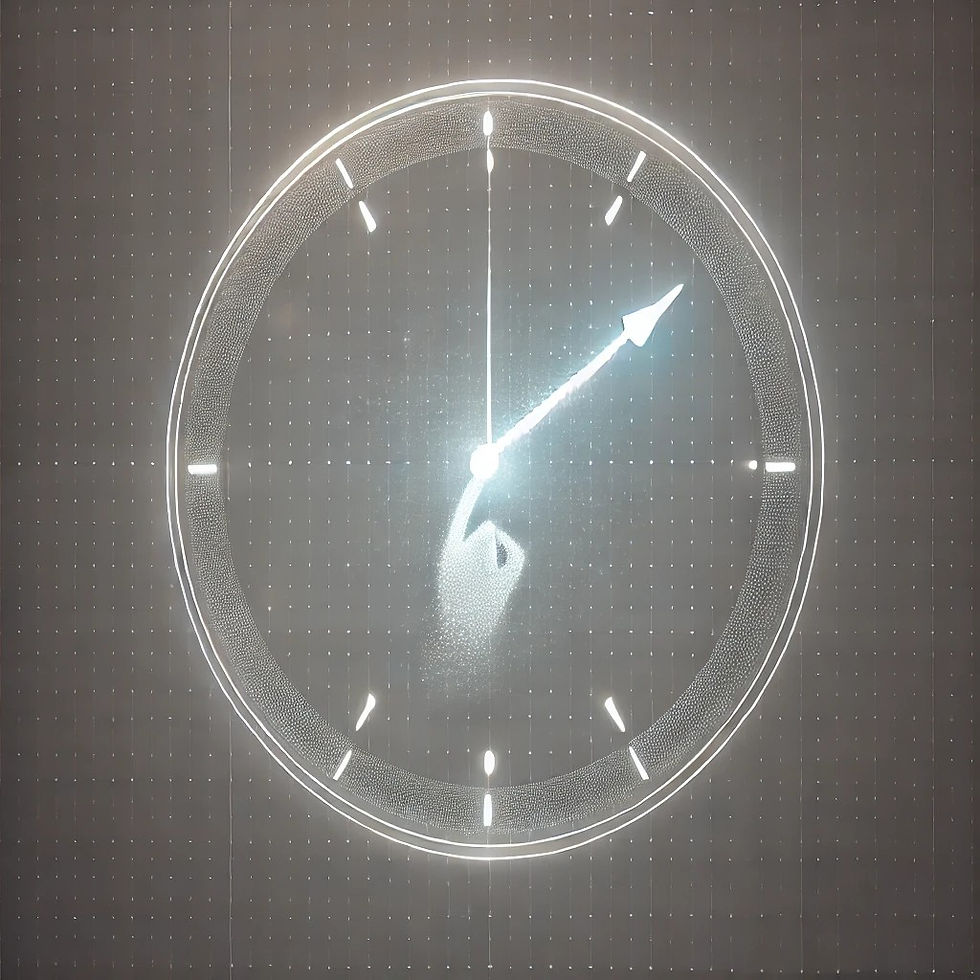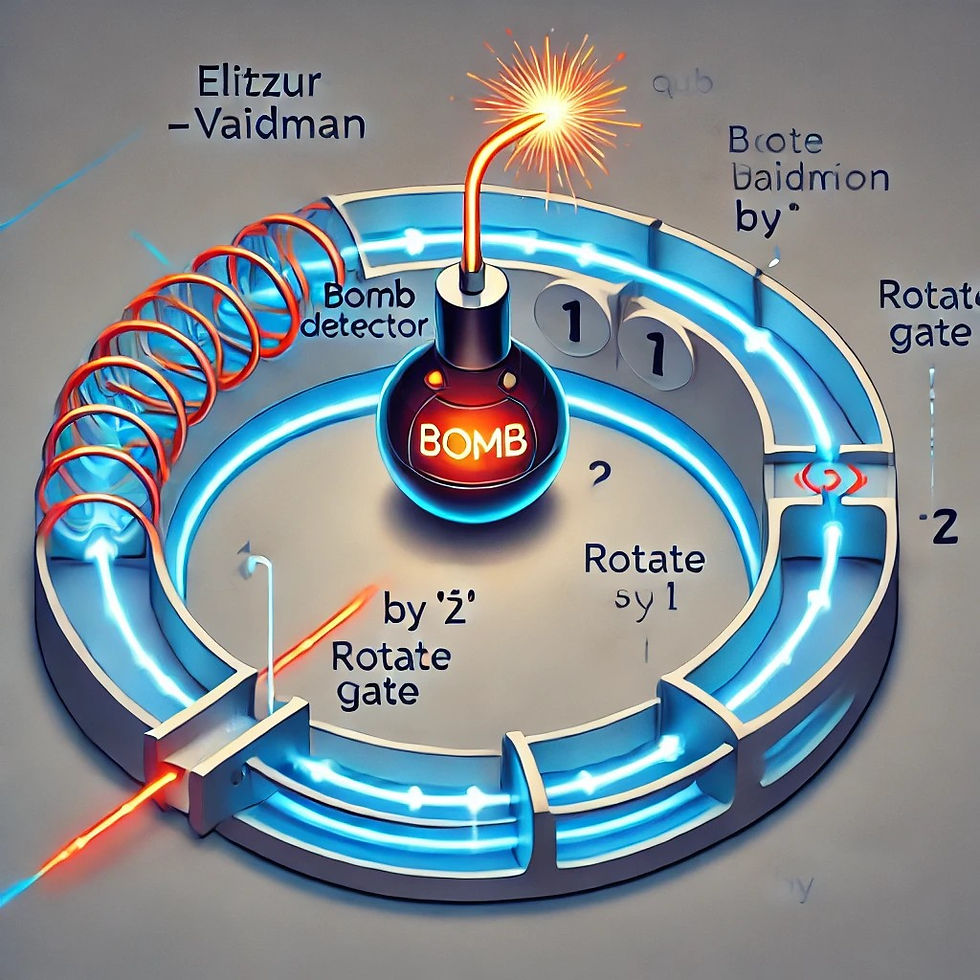Quantum Computing for Everyone: A Clock Hand You Can’t See
- asaf ferber
- Feb 25
- 5 min read

Introduction: The Quantum Computing Race
A quiet revolution is happening in labs across the globe. Scientists and engineers are scrambling to build quantum computers—machines that promise to tackle problems far beyond the reach of traditional supercomputers. From unraveling cryptographic codes to engineering new life-saving drugs, these devices could unlock entire frontiers in technology, medicine, finance, and beyond.
But what exactly makes quantum computers so special? How do they work, and what are the building blocks that make them tick? In this blog post, we’ll explore these concepts in a way everyone can appreciate. Get ready for a mind-bending journey into a realm where not seeing your clock hand can sometimes be a huge advantage.
The Qubit: A Hidden Clock Hand
At the heart of every quantum computer lies the qubit—the quantum version of a classical bit. In a conventional computer, a bit is either 0 or 1, never both. A qubit, however, can be a blend (or superposition) of 0 and 1, much like a clock hand pointing somewhere along a circle, although you can’t actually see where until you measure it.
Clock Face Analogy: Picture a blank clock face with a hidden clock hand pointing to 3 o’clock. That’s your qubit in state 0. If it points to 12 o'clock, then it is you qubit in state 1
Superposition: Instead of being restricted to “3 o’clock” (0) or “12 o’clock” (1), the qubit can spin into all sorts of in-between positions—an entire continuum of possibilities.
Rotations, Reflections, and Measurement
So, how do we actually work with a qubit? Think of rotations and reflections on our invisible clock face—these are the quantum gates that let us manipulate the qubit’s state. Even though we never truly see where the clock hand points, we can tilt it clockwise or counterclockwise by a chosen angle (like π/4), or flip it across any axis through the origin.
Here’s the catch: the moment we measure the qubit, it’s like shining a flashlight on our hidden clock. Instantly, the qubit snaps into a definite position—either 0 (3 o’clock) or 1 (12 o’clock). We learn the result, but in the process, we lose the delicate, in-between superposition that makes quantum computing so powerful.
Why is measurement so unpredictable? Any point on the unit circle in the xy-plane can represent the qubit’s state, (x,y), where x^2 + y^2 = 1. Upon measurement:
The probability of seeing 0 is x^2.
The probability of seeing 1 is y^2 = 1 - x^2.
If the qubit starts exactly at 0 or 1, you’ll measure 0 or 1, respectively, with certainty. But for any other point on the circle, the outcome is probabilistic: you simply can’t know for sure which result you’ll get until the measurement is made.
It’s these quirky rules—allowing states to be both here and there (yet snapping to just one when measured)—that give quantum computing its remarkable power, if you know how to harness it.

The Elitzur–Vaidman Bomb Problem
Want a fun peek into this quantum weirdness in action? Check out the Elitzur–Vaidman bomb problem, a famous thought experiment introduced by Avshalom Elitzur and Lev Vaidman in 1993. It highlights how quantum mechanics can let us gather information about an object without directly interacting with it—something impossible in a purely classical setting.
Scenario
You have a batch of bombs. Some are real (and explode if their detector is triggered even once), while others are duds (and do nothing). Classically, you can’t check a real bomb without blowing it up at least once. But quantum mechanics offers a clever detour around this dilemma!
Setting Up the Quantum Detector
Initial State: Start your qubit in the state 0, i.e., the clock hand points to “3 o’clock” on the unit circle (coordinates (x,y)=(1,0)).
Detector Check: Pass the qubit through the bomb’s detector.
If the bomb is a dud, it does nothing.
If the bomb is live, it measures the qubit. Should it find the state 1, everything goes BOOM. If it reads 0, you’re safe—this time.
Rotate by θ: After each check, rotate the qubit slightly (counterclockwise) by an angle θ (we will choose the actual value of θ later, but think about it as a small number) . This nudges the clock hand away from “3 o’clock.”
Repeat π /(2θ) Times: Each pass risks a tiny chance of reading 1 and triggering an explosion, but if θ is small, as we will explain below, that chance is very small indeed.
Final Measurement:
Dud Bomb: The detector never acts, so all those small rotations add up to move the qubit from “3 o’clock” (0) to “12 o’clock” (1) (do you see why?). Measure it at the end and you see 1—confirming the bomb is a dud.
Live Bomb (No Explosion): The only way you never exploded is if the detector always found 0, so the qubit never really left “3 o’clock.” That means your final measurement is almost certainly 0, confirming a functional bomb—without losing your lab in the process.
Why It Works: Probability in a Nutshell
In quantum mechanics, if your qubit is just a tiny angle θ away from 0, it turns out that the probability of measuring it as 1 is on the order of θ^2. Doing the experiment π/(2θ) times, makes the probability to measure 1 in at least one of the experiments at most θ^2π/2θ=θπ/2, which goes to zero as θ goes to zero. The upshot? You can make the test extremely safe by choosing a suitably small θ.
This weird quantum phenomenon—interaction-free measurement—gets even more bizarre and powerful when you start chaining multiple qubits together. But that’s a story for another day, and we will dedicate another blog post for the interactions between multiple qubits.
A Dash of History & Next Steps
Quantum computing has deep roots in the musings of pioneers like Richard Feynman (“I think I can safely say that nobody understands quantum mechanics.”). David Deutsch and others expanded on these wild ideas, weaving them into a theoretical framework that underpins today’s quantum computing race.
The Elitzur–Vaidman bomb problem is just one peek into the surprising ways quantum effects let us do the seemingly impossible. Next up, we’ll dive deeper into entanglement—where two or more qubits act like one, no matter how far apart they are—and see why that’s the ultimate key to quantum computing’s staggering potential.
Stay curious, stay brave, and get ready for more quantum adventures! Whether it’s bombs, pharmaceuticals, or advanced cryptography, quantum mechanics always has a trick up its sleeve—one that could reshape our world in ways we’re only beginning to imagine.



Comments